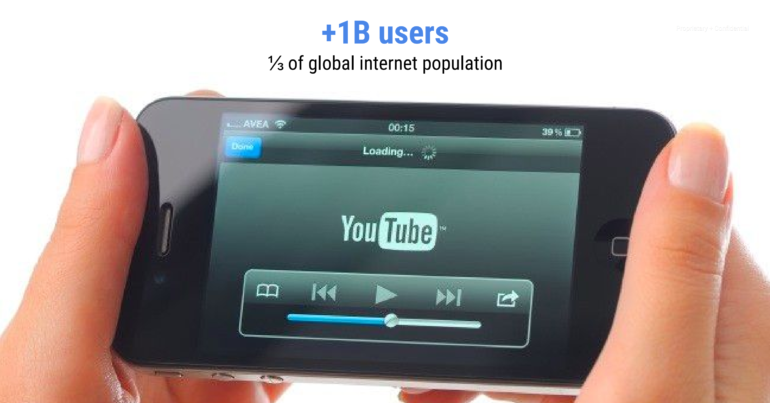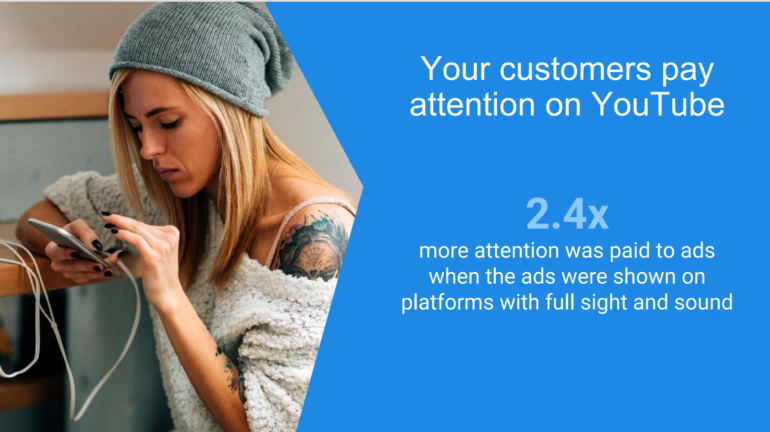July 10, 2017
Back in August 2015, Jeff Baum made the case for YouTube advertising by highlighting the opportunity for brand lift, remarketing, storytelling, and full-funnel measurement. Since that time, the capacities for YouTube advertising have only expanded, and there has been healthy coverage of this platform growth:
These updates and others have contributed to making YouTube the second largest search engine and 3rd largest site on the Internet. As Diane Chelius discussed last week, 79% of a user’s time online is spent outside of Search. Diane’s insights into in How to Utilize PPC Brand Building Strategies centered on getting the most out of Display Advertising. Video advertising provides another channel to reach your consumers—or prospective consumers—beyond the 21% of the time they are actively searching.
A Shift In Mindset
Frequently, when we pitch YouTube or other video advertising to clients, we are faced with the challenge: how will this prove its value? Sure, we can track direct and view-through conversions, but often the benefits of video advertising are invisible to our standard PPC attribution models—even if we have evolved beyond last click (if this is getting fuzzy, brush up on How to Use Adwords Attribution Models here).
The thing about video advertising is that we are tempted to treat it like other PPC advertising—because that’s how we set it up, pay for it, and report on it. In reality, though, we should be thinking about YouTube and other video ads the way we do print and television advertising: we may not be able to directly measure impact the way we can with other channels, but if we note that business picks up while video is running and falls when video is stopped, we can pretty confidently assert that there is positive value present. No one expects a broadcasting network to come out and say, “this commercial will earn you 100 new customers every day that it airs,” or a print news provider to promise “you will see a 14% lift in your branded search traffic after running this ad.” Yet often this is what is anticipated when a new video campaign is being proposed or evaluated.
How, then, do we explain this to a higher-up who is used to PPC being a data-driven industry? How do we sell a medium in an attribution-enamored world that seems to elude attribution?

Why We Love YouTube And Why You’ve Got to Try It
First, let’s consider reach. YouTube’s reach is insane, with over 1 hour of video content uploaded every second and 4 billion videos viewed each day. In 2017, 50% of those YouTube views occur on mobile devices, meaning you can reach users in virtually any environment—on a bus commuting to work or school, waiting in line at the BMV, at a restaurant with a group of friends, or in bed at home when they can’t fall asleep. And with YouTube, as opposed to television or other providers, you are only charged for Views, when someone actually watches or interacts with your ad (100% viewability).
Given the expansive network of viewers in reach, we are now challenged with narrowing a global citizenry to just the most valuable audience for our brand (see How to Find the Right PPC Audiences). YouTube, as an extension of AdWords, offers countless combinations of layered audiences that can directly target your chosen pool of viewers. Furthermore, there is greater flexibility and liberty for “sensitive categories” on YouTube than other platforms, with new audience segments for Life Events and Consumer Patterns coming soon.
Above all, though, YouTube’s greatest potential for video advertising success is that fact that users specifically come to the site to watch videos. They are most likely prepared already to devote sight and sound to the clip, show, or tutorial they’ve selected, making your message that much easier to convey and 24x more memorable than videos viewed without sound.

Google teams are even making the PPC sell for YouTube simpler—offering to cut together ads from YouTube videos for accounts without video editing capacity, or providing instruction and tips for creating video ads using only a mobile phone! Google teams are also working to demonstrate the increased awareness generated through YouTube by providing Brand Lift* experiments that measure the lift in search traffic directly attributable to your video or display campaigns.
YouTube Is More Than A PPC Platform
Beyond its own virtues as an addition to your PPC strategies, YouTube can be an asset to your television marketing strategies as well. Because of the direct feedback from users (views, clicks, skips, comments, likes, and shares), YouTube is a great platform for testing creative and discovering what messaging works—and more importantly, what doesn’t—before spending big bucks on a television spot. If YouTube sounds like a “step down” or riskier channel for PPC, perhaps it should rather be considered a “step up” or less risky version of TV advertising. Along with user feedback, YouTube advertising also brings with it a capacity for Remarketing in Search and Display, and if you’re lucky, maybe even some conversion data to follow.
——-
*Requires minimum budget of $8,400 over 2 weeks. Reach out to a Google representative for more details on Brand Lift attribution projects.
(Images by Google)